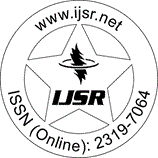Downloads: 4
India | Anaesthesiology | Volume 14 Issue 3, March 2025 | Pages: 536 - 539
Comparing Esmolol and Lignocaine for Managing Blood Pressure and Heart Rate during Intubation: Which Works Better?
Abstract: Background: Endotracheal intubation via direct laryngoscopy frequently induces significant sympathetic cardiovascular responses, posing risks especially in patients with underlying cardiovascular or cerebrovascular disease. Pharmacological agents such as Esmolol and Lignocaine have been used to mitigate these hemodynamic responses. This study compares the effectiveness of these two agents. Aims: To evaluate and compare intravenous Esmolol and Lignocaine in attenuating hemodynamic responses to laryngoscopy and endotracheal intubation. Study Design: Prospective randomized controlled study. Material and Methods: The study was conducted from March 2023 to February 2025 at Hi - Tech Medical College & Hospital, Bhubaneswar. Sixty ASA grade I and II patients aged 18 - 60 years undergoing elective surgery were randomized into two groups: a) Group E (n=30): Received intravenous Esmolol 3 mg/kg. b) Group L (n=30): Received intravenous Lignocaine 2 mg/kg. Hemodynamic parameters Systolic Blood Pressure (SBP), Diastolic Blood Pressure (DBP), Mean Arterial Pressure (MAP), and Heart Rate (HR) were recorded pre - intubation and at 0, 1, 3, 5, 10, and 15 minutes post - intubation. Adverse effects were monitored. Results and Discussion: Esmolol significantly attenuated SBP, DBP, MAP, and HR compared to Lignocaine at 1, 3, 5, 10, and 15 minutes post - intubation (p<0.05). Esmolol maintained stable cardiovascular parameters close to baseline throughout the observation period, whereas Lignocaine demonstrated sustained elevation, especially notable at 1 and 3 minutes post - intubation. No significant adverse effects were noted in either group. The study confirms Esmolol?s superior efficacy, likely due to its cardio - selective ?? - blockade reducing catecholamine - induced cardiovascular stress. Conclusion: Intravenous Esmolol is more effective than intravenous Lignocaine in attenuating hemodynamic responses during laryngoscopy and intubation. Esmolol provides superior and consistent control over SBP, DBP, MAP, and HR surges, enhancing perioperative cardiovascular stability and safety.
Keywords: Esmolol, Lignocaine, Hemodynamic Response, Laryngoscopy, Intubation, General Anaesthesia, Cardiovascular Stability
How to Cite?: Dr. Samuel Jacob, Dr. Bibekananda Tripathy, "Comparing Esmolol and Lignocaine for Managing Blood Pressure and Heart Rate during Intubation: Which Works Better?", Volume 14 Issue 3, March 2025, International Journal of Science and Research (IJSR), Pages: 536-539, https://www.ijsr.net/getabstract.php?paperid=SR25311122107, DOI: https://dx.doi.org/10.21275/SR25311122107
